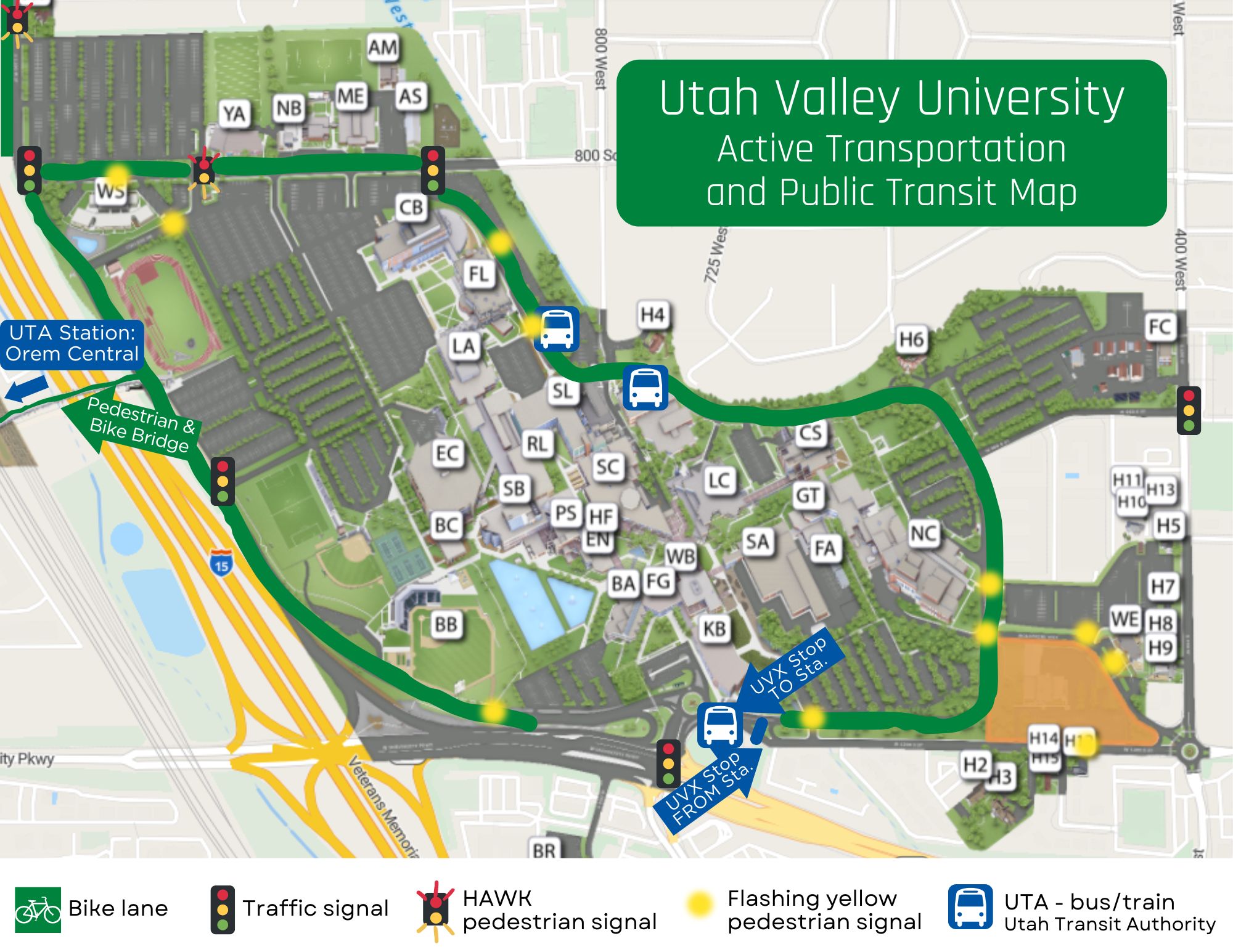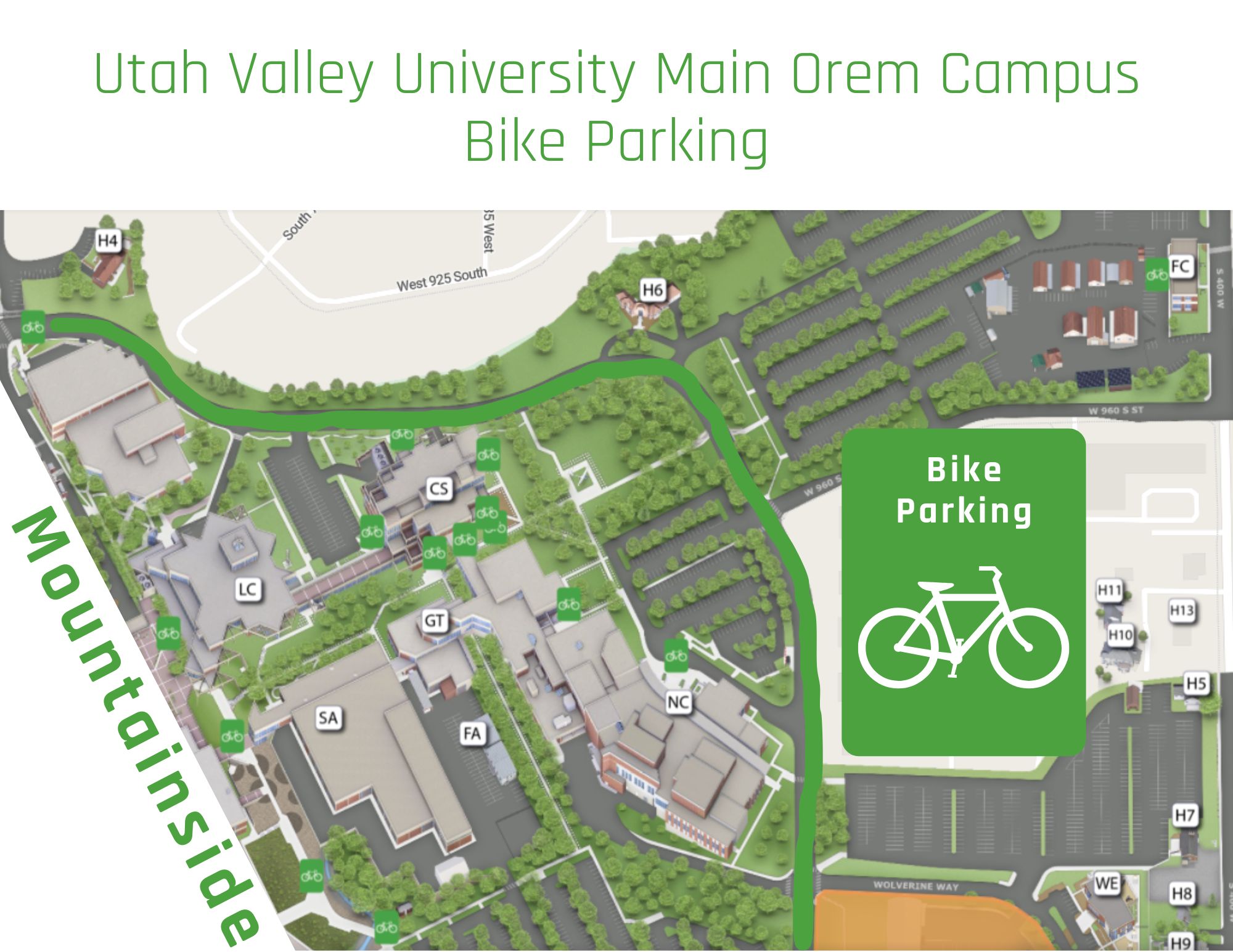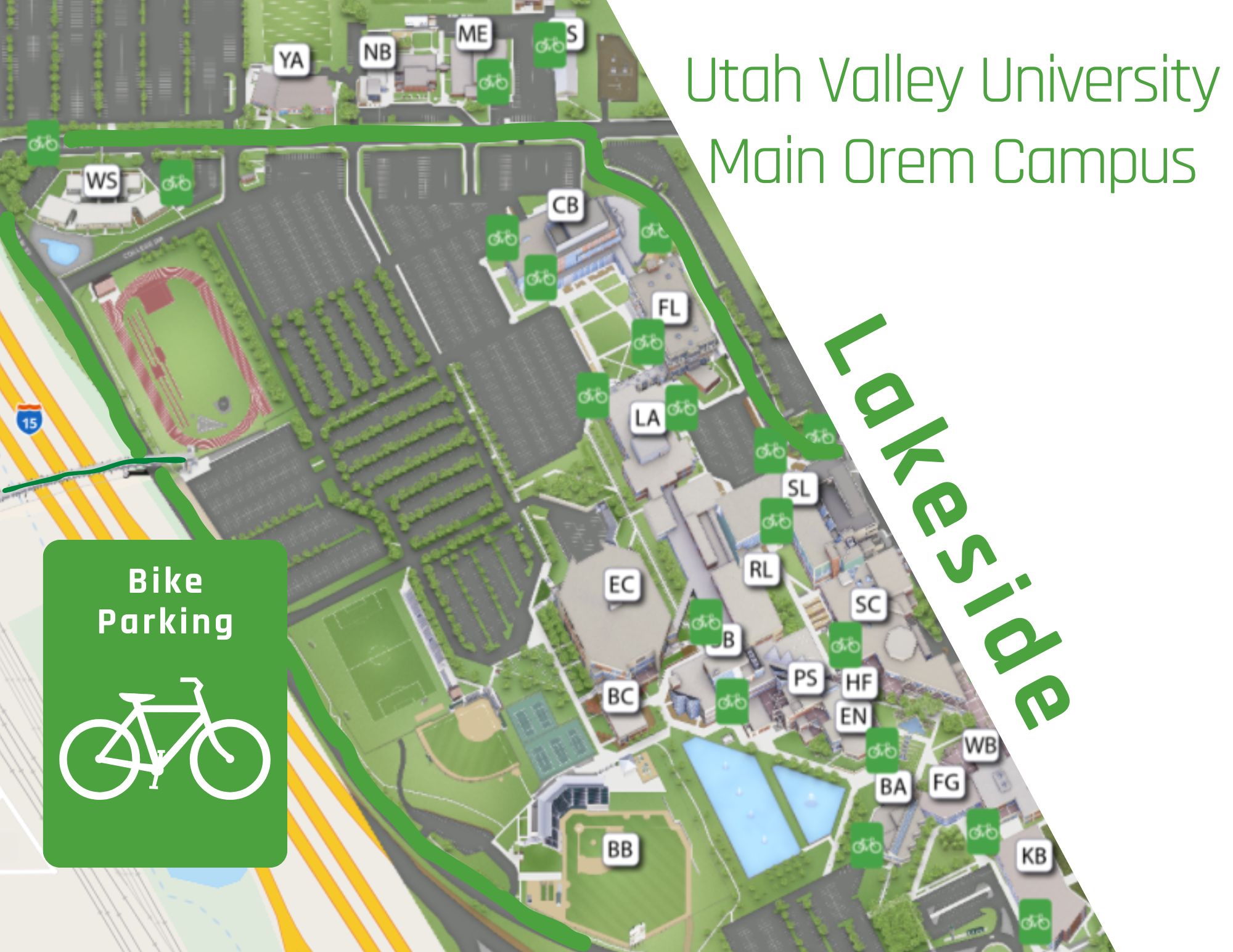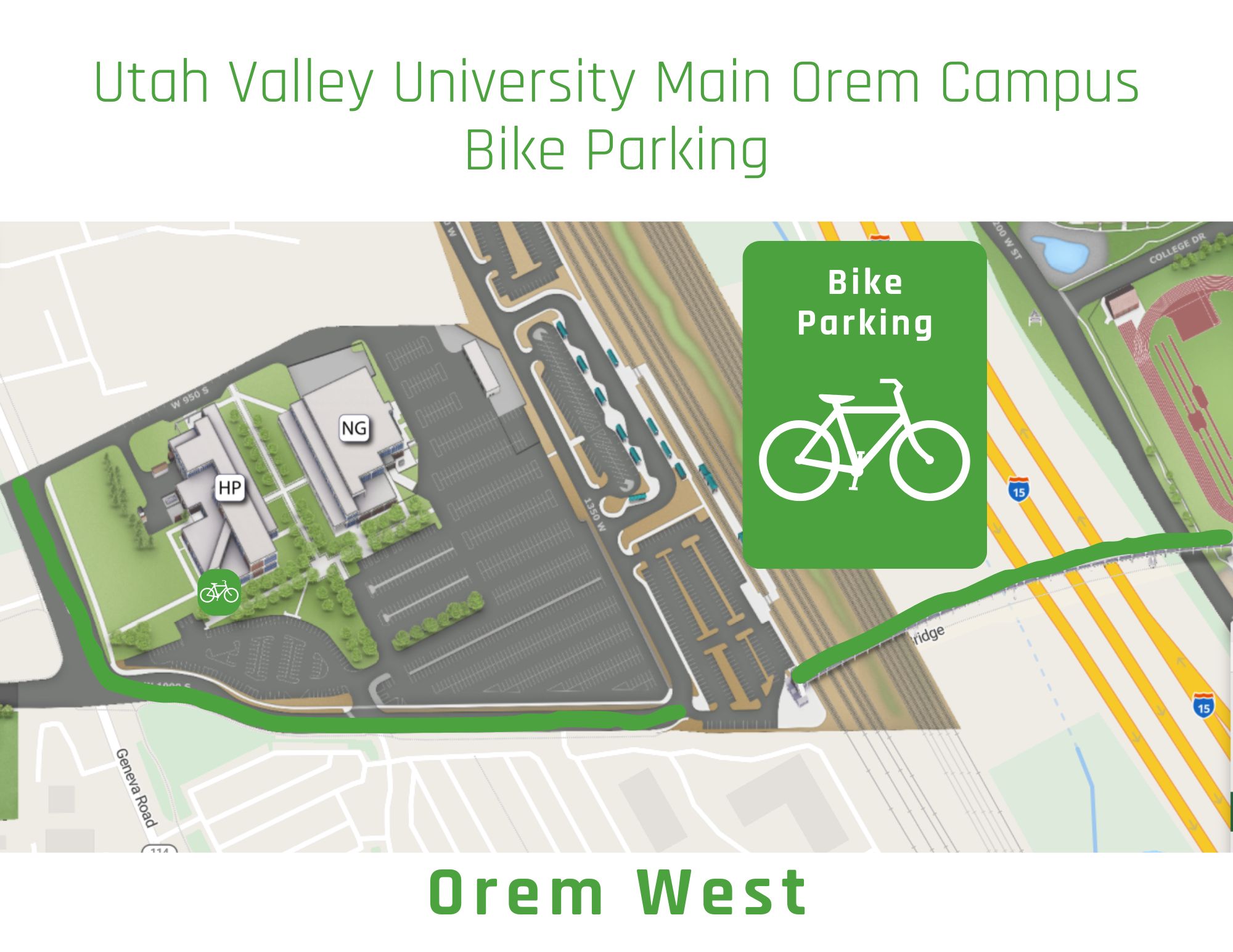Getting to, from, and around campus using something other than a private car, helps cut down on traffic congestion and air pollution, contributes to better physical and mental health, and saves money. Whether you are walking, using a personal mobility device, or riding a bike, scooter, or skateboard, here are some tips to help you navigate campus.
UVU Campus Policies & Resources
UVU Policy 706: Campus Walkway Safety Policy
At-a-glance: Operators of bikes, scooters, skateboards, etc. may ride on campus walkways, but are to exercise care and caution and yield right of way to pedestrians at all times. (Full policy text)
UVU Policy 703: Restrictions on the Use of Skateboards, Roller Blades, Bicycles, Motorcycles, and Hoverboards Policy
At-a-glance: Skateboards, roller blades, bicycles, scooters, etc. shall not be used on stairways, structures, landscaped areas, or inside buildings. They should not be parked at disabled ramps, hallways, stairwells, fire hydrants, classrooms, or block entrances/exits. (Full policy text)
Public Transit Benefits and Active Transportation/Micromobility
Utah Valley University students, faculty, staff, and their dependents have access to the Utah Transit Authority (UTA) system at no cost. Conventional buses are equipped with bike racks on the front exterior of each bus. The UVX (Bus Rapid Transit) buses and the FrontRunner trains have bicycle facilities inside designated cars.

Bicycle Parking
Another benefit of riding a bike to campus is parking availability and proximity to campus destinations. Reduce the risk of theft by locking up your bicycle at one of the many convenient bike parking locations across campus. U-style locks provide the greatest security.



Utah State Laws
Source: Bike Utah - bikeutah.org/bicyclelaws
For motorists:
It's the law to provide a 3-foot (minimum) buffer when passing a bicyclist. Motorists may cross the centerline or center two-way left-turn lane (when traffic conditions allow) to provide a greater buffer when passing bicyclists.
For bicyclists:
In general, if you are riding on the road, you have the rights and responsibilities of a motorist. If you are riding on a sidewalk, trail, crosswalk, etc. you have the rights and duties applicable to a pedestrian.
Riding With Traffic:
Signaling:
Additional Rules of the Road:
For more detailed information about Utah bicycle laws, visit Bike Utah at bikeutah.org/bicyclelaws.